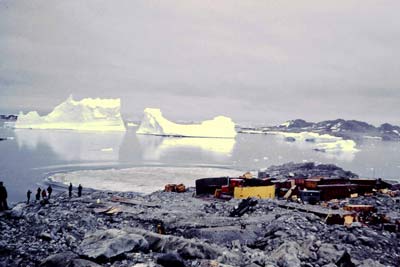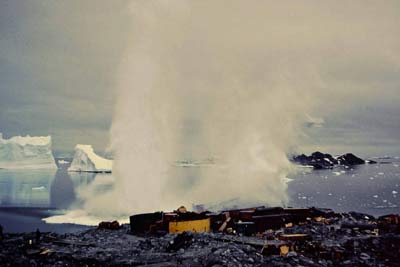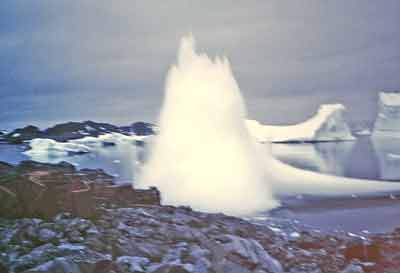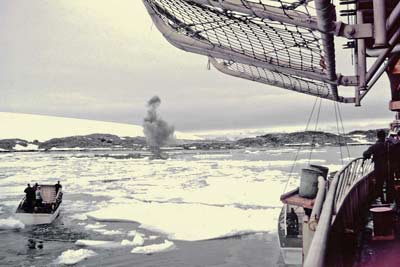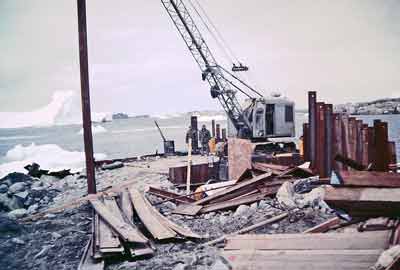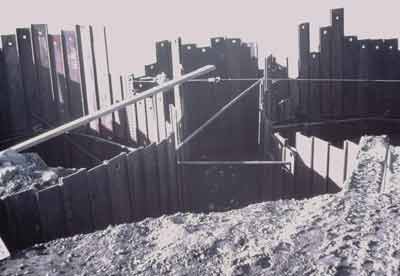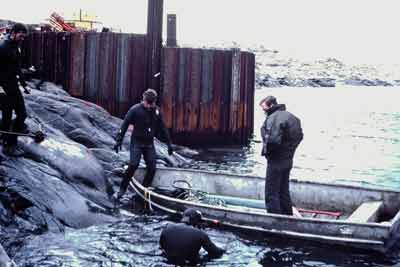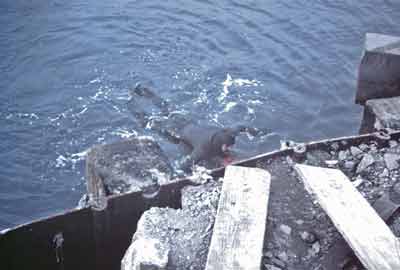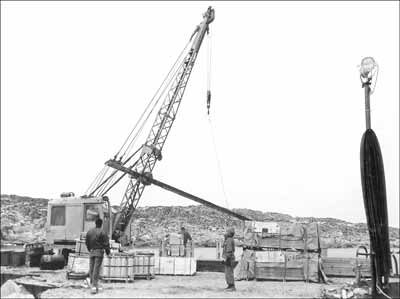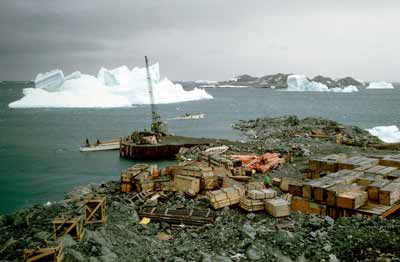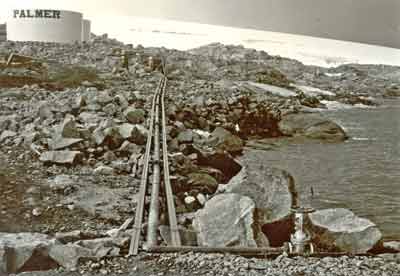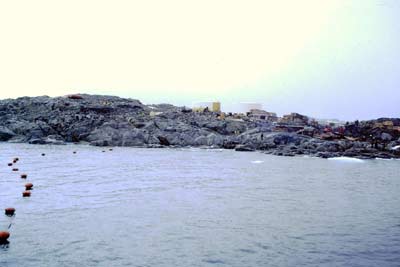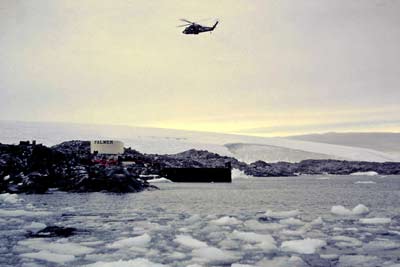Palmer Station Construction 1966-67 (continued)
|
After the boat ramp, access road, and building site were leveled, the next task was to prepare the site for the two 126,000 gallon fuel tanks. The pads, which had to be 20 feet in diameter larger than the 37-foot-diameter tanks, had to be blasted out of the rock surface. 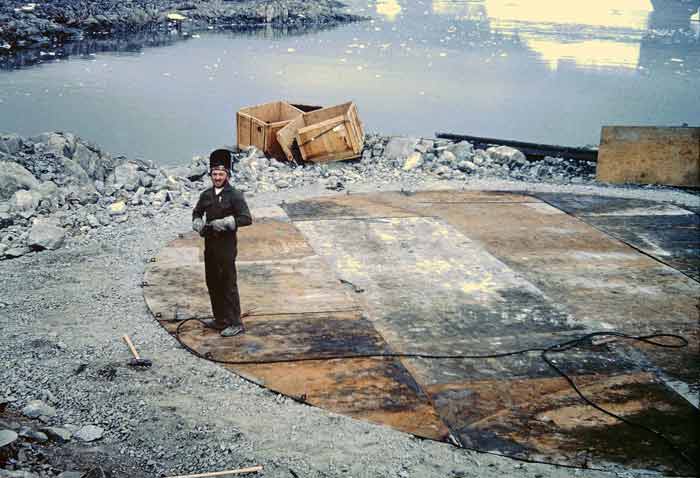 Here's welder Jim Turner working on the bottom of one of the fuel tanks. Jim was around for both the 1966-67 and 1967-68 seasons. This is Jim's photo, one of many he presented to the station for the 50th anniversary commemoration. His 1967-68 photos are on this page. | |
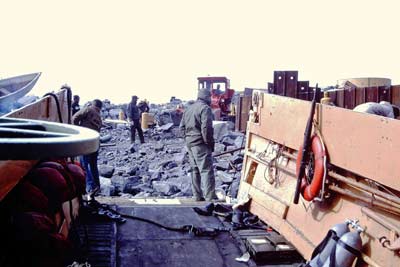 Just north of the pier, Joe Rogers, at the helm of the LCVP, is looking aft toward Boats (BM3) Irv Sparrow, who is on the ramp with hands in pockets. They're getting ready to blast the turning basin. Yes, that's a loaded M-1 Garand rifle slung with the life ring. And it looks like there's a movie on the deck below the rifle. |
|
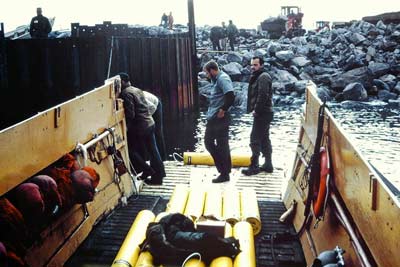 Speaking of explosives, here the landing craft is loaded with ammonium nitrate canisters, to deepen the turning basin for the R/V Hero. Yes, ammonium nitrate fertilizer + fuel oil (ANFO) is a common and useful explosive employed for years by farmers, contractors...and Timothy McVeigh in Oklahoma City in 1995. |
|
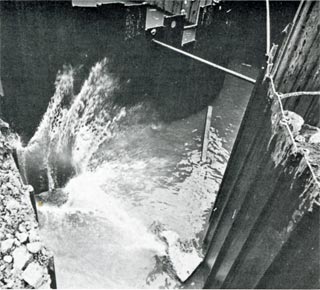 The John Deere loader pictured on the previous page was used to fill the pier cells with rock (left, (USCG photo, AJ July-August 1967). There was concern that it would be adequate, but it proved very valuable. The John Deere loader pictured on the previous page was used to fill the pier cells with rock (left, (USCG photo, AJ July-August 1967). There was concern that it would be adequate, but it proved very valuable. | |
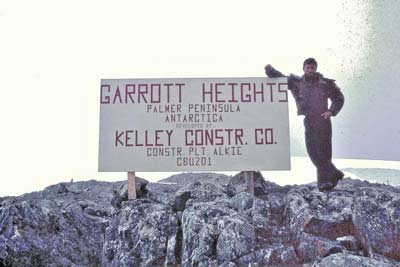 Here's Joe Rogers next to the sign erected next to the flagpole on Gamage Point. LTJG Walter B. Garrott was the Seabee platoon leader, and BUC George J. Kelley (Joe Rogers' undated photo) was the construction foreman. Chief Kelley enlisted in 1940. He was aboard the battleship USS California when it was attacked at Pearl Harbor, and he was also aboard the cruiser USS Chicago when it was sunk in the Solomons in January 1943. Here is George's January 2008 obituary. 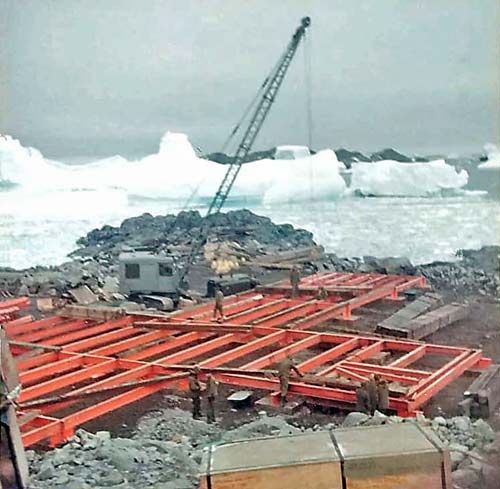 The nearly completed Biolab foundation--a task originally scheduled for the next season (LP). | |
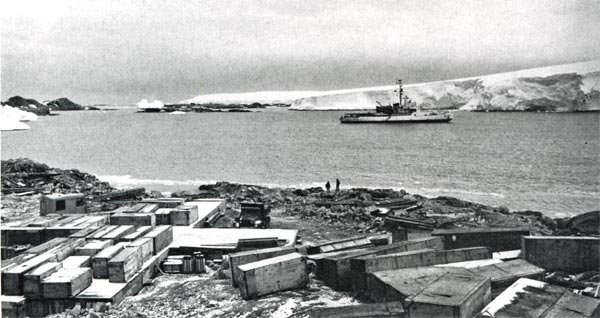 USCGC Westwind in Arthur Harbor in mid-March 1967 at the end of the construction season; in the fore- ground, the completed Biolab foundation with crated construction material (W. Austin, AJ May June 1967). 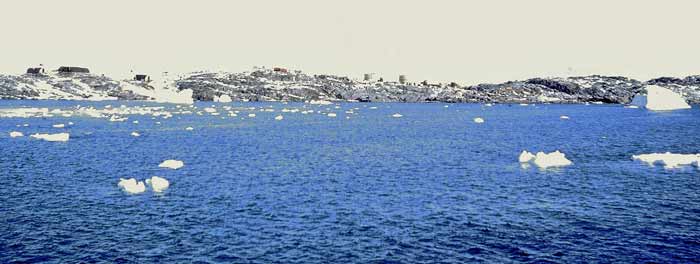 Another look at the entire site at the end of the season. The Seabee camp is at left. By 20 March all work was completed, the area was cleaned up, material was inventoried, and the weary Seabees boarded the Westwind for the trip to Punta Arenas. From there, the Air Force flew them back to Quonset Point, RI, where they arrived on 27 March. Credits for these two pages...unless indicated otherwise, the color photos are from Westwind crew member Joe Rogers; the photo of the fuel tank bottom is from Jim Turner, the color photo of the Biolab foundation beams is from diver Larry Parker (LP), and the other color photo of the Biolab foundation, staged material, and pier fender work was shared by the NSF Office of Polar Programs Facebook page. As for the B&W photos, the Biolab foundation photo is by W. Austin (NSF) from the Antarctic Journal, May/June 1967, the six (CB) photos were shared on the U.S. Navy Seabee Museum flickr page, and the other 3 B&W photos on this page are official U. S. Coast Guard photos published in the Antarctic Journal, July/August 1967, along with a detailed construction report which provided some of the information on these two pages. Several Antarctic Journal articles provided information about this effort, including the medevac. The two articles of greatest interest are these from the July-August 1967 issue: Construction at Palmer Station" by LTJG Richard Whitmer and BUC George Kelley; and "Small Boat Operations." The station construction would be completed in 1967-68. | |
